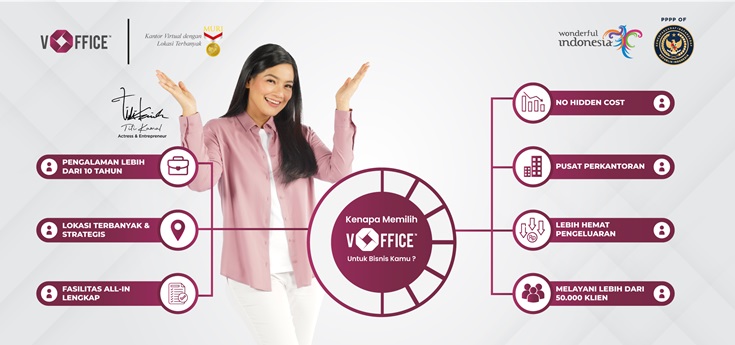If you are interested in the business world, you are likely familiar with the term CV in Indonesia. Among the available business entity options, PT (Perseroan Terbatas) and CV are the most commonly chosen by entrepreneurs. Their presence significantly impacts the country’s economic development.
This article will detail the steps and requirements for establishing a CV, so make sure to read it to the end!
Read Also: Differences Between CV and Firm Every Aspiring Entrepreneur Must Know!
What is a CV?
Generally, CV stands for Commanditaire Vennootschap, which in English is often referred to as a Limited Partnership.
A CV is a type of business entity known for its partnership characteristics, consisting of two types of partners: active partners (commanditaire) and passive partners (commanditaire).
Active partners are fully responsible for the management and operations of the company, while passive partners are only responsible for a portion of the capital they invest.
What Are the Requirements to Establish a CV?
After understanding what a CV is, the next step is to understand the establishment requirements. Here are some requirements that must be met:
- A CV must be established by at least two people, consisting of active and passive partners.
- The establishment of a CV must be done through the creation of a notarial deed in Indonesian.
- The founders of the CV must be Indonesian citizens (WNI), and the ownership of the company must be 100% held by WNI.
- Required documents include copies of the identity cards of active and passive partners, NPWP, a company domicile certificate with a stamp, a KBLI statement letter with a stamp, and the company’s phone number and email address.
- If there is a power of attorney, the establishment of the CV must be accompanied by a power of attorney letter, minutes with letterhead, and a stamp.
By understanding these requirements, the process of establishing a CV can be done correctly and in accordance with the applicable laws in Indonesia.


Read Also: What is TDP (Company Registration Certificate)?
Documents Required for Establishing a CV
To establish a CV (Commanditaire Vennootschap) in Indonesia, you need several important documents, including:
- Deed of Establishment of the CV with official documents created before a notary, containing complete information about the establishment of the CV, such as the founders’ identities, the name of the CV, objectives, the management structure, and other relevant provisions.
- Business License providing legality for the CV to conduct its business activities, usually issued by the relevant local authorities.
- Company Tax Identification Number (NPWP) required for tax administration.
- Joint Agreement containing provisions related to management, profit sharing, and the rights and obligations of CV members.
- Founders’ Identity Documents such as ID cards or passports needed for identity verification and validity.
- Company Domicile Certificate (SKDP) showing that the CV has a legitimate domicile to conduct its business.
- Other Supporting Documents additional documents may be required according to local regulations and needs.
Ensure that you comply with the applicable requirements and procedures in your area when establishing a CV and make sure all necessary documents are prepared completely and according to the applicable provisions.


What Are the Procedures and Steps to Establish a CV?
The procedures and steps to establish a CV (Commanditaire Vennootschap) in Indonesia involve several steps that need to be carefully followed. Here is a step-by-step guide to establishing a CV:
1. Determine the CV Founders
The first step is to determine the founders of the CV. A CV is usually established by two or more people who have agreed to cooperate in a business venture to make a profit.
2. Prepare Establishment Data
Prepare the establishment data, including the personal information of the CV founders, such as full names, addresses, and identification numbers.
3. Submit the CV Name to the Ministry of Law and Human Rights
After preparing the establishment data, the next step is to submit the CV name to the Ministry of Law and Human Rights. Ensure the name submitted is not already in use by another CV and complies with the applicable regulations.
4. Create the Deed of Establishment
If the CV name is approved, the next step is to create the deed of establishment before a notary. This deed contains the management structure, company policies, and other important matters related to the establishment of the CV.
5. Signing
The founders of the CV then sign the deed of establishment as a mutual agreement to run the business.
6. Obtain the Company Domicile Certificate (SKDP)
Next, the CV needs to obtain an SKDP from the relevant local authorities. The SKDP is proof that the CV has a legitimate domicile to conduct its business activities.
7. Obtain a Company Tax Identification Number (NPWP)
The CV also needs to obtain a company NPWP for administrative and tax purposes.
8. Register the CV with the District Court (PN)
The CV must be registered with the local District Court in accordance with the applicable regulations.
9. Obtain a Business Registration Number (NIB)
Finally, the CV needs to obtain an NIB for the legal operation of the business in Indonesia.
After completing all these steps, the CV will become a legitimate legal entity and can conduct its business activities in accordance with the applicable regulations. Make sure to understand the requirements and procedures that apply in your area and seek professional assistance if needed to ensure the CV establishment process runs smoothly.
If you intend to start or expand your business, you can rely on the services provided by vOffice. Our professional team is ready to assist you with various business needs, such as:
- Establishment of Limited Liability Company (PT)
- Establishment of Commanditaire Vennootschap (CV)
- Haki / Indonesia trademark registration
- Tax Consultation
- Virtual Office
- Office Space for Rent
- Meeting Room Rental
- and various other services.
Contact us now and get special offers!
[contact-form-7 id=”f1aa646″ title=”Contact Form Blog_EN”]










